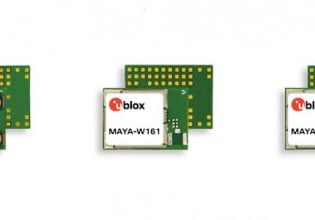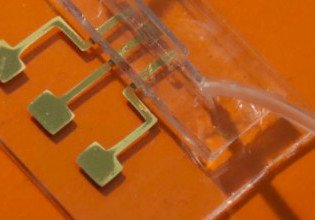力量ing the Voyager Spacecraft with Radiation: The RTG (Radioisotope Thermoelectric Generator)
2017年6月25日经过罗宾·米切尔(Robin Mitchell)在本文中,我们将查看Voyager探针的电源,即放射性同位素热电发生器。
Voyager计划最初是通过利用木星,土星,天王星和海王星之间的对齐方式来研究几个外行星的。但是,这两个探针仍在运行,并在发布后40年以上,将有价值的科学数据寄回。在本文中,我们将查看Voyager探针的电源,即放射性同位素热电发生器。
Welcome to AAC's series of articles celebrating the Voyager missions! Please check out the rest of the series to learn more:
深空问题
One of the most important mission parameters of the Voyager probes was to send back scientific data and images of Jupiter and Saturn. However, power generation from such a distance from the sun is a serious problem. Assuming the best case scenario, the distance between theSun and Jupiter is approximately 5.2AU并且,地球上太阳的能量强度为〜1300W/m2,则近似能量木星上太阳的强度为〜50W/m2。This dramatic drop in solar intensity, despite only Jupiter being 5 times further from the Sun than Earth is to the Sun, is due to the inverse square law where the intensity at distance r is proportional to the inverse square of that distance. For example, if the distance from the sun is doubled then the intensity is reduced by a factor of 4. Jupiter, being 5AU from the sun, has an intensity 1/25 of that found at earth.

Solar panels are great... if you're close to the sun! Image courtesy ofNASA
So with only 50W/M2 of energy and assuming a太阳能电池板效率为15%(此数字值得商bat), the energy per square meter of solar panel becomes 7.5W. Considering that the probe was going to need a power supply close to 400W, the total solar panel surface area would have been 53.3 M/2. This calculation does not even take into account a Saturn encounter (a distance of 10AU), which would only have 10W/M2 of solar radiation. Therefore, a better power source was needed and so the engineers at NASA decided to go for a Radioisotope Thermoelectric Generator.
使用辐射进行电源
“辐射”是一个术语,描述了从原子中转移质量或能量的几个过程。当电子从高能移动到较低能源轨道和光子时,会产生电磁辐射 - 这种类型的辐射允许Voyager无线通信当核辐射(质子和中子)重新排列以从高能量转移到低能量状态时,发生核辐射时发生核辐射,生产并捕获片段和光子以产生热量 - 这种辐射类型为航空旅行者提供了力量。

电磁频谱。图像提供OSHA

Ionizing radiation penetration depths. Image courtesy ofMirion
Voyager探针上的RTG依靠plutonium-238,主要是α发射极。α辐射是最电离的类型,这意味着它具有剥离其电子其他原子的强大能力。但是,Alpha也是最容易保护的。
放射性同位素热电发生器 - 它们的工作方式
The basic RTG consists of a radioactive material (preferably one with a short half-life such as Plutonium 238 which has a half-life of 83 years), and a thermocouple. Radioactive materials release thermal energy when they decay and this heating effect is, naturally,称为衰减热。当原子经历放射性衰减时,发射颗粒的动能会转化为热能。然后将此热能应用于thermocouple并且“凉爽的一面”保持尽可能凉(使用散热器)。结果是在热电偶中产生EMF,该电动组织可以直接用作电源。

尽管基本的RTG似乎很简单,但必须考虑许多因素。最重要的考虑因素之一是对人和环境的安全。为了使RTG产生可用的功率(例如,数百瓦),所使用的放射性材料必须能够产生大量的热量(几千瓦)。具有的材料短半衰期每秒会发生更多放射性衰减比具有更长半衰期的材料。放射性材料产生的热量与其半衰期成反比,因此半衰期短的材料会产生最多的热量。这就是为什么使用诸如plutonium-238,锶90和Polonium-210之类的元素的原因。
Radioisotope Thermoelectric Generator – The Issues
RTG fuels are highly radioactive and thus pose a credible threat to the environment if released. This is why the卡西尼调查被撞到土星由于RTG在船上可能会损害土星卫星上未发现的生命。因此,RTG包含许多保护层,以防止放射性材料的释放。Voyagers RTG由燃料组件(称为热源)和实际发电机本身组成。
放射性材料被分成许多颗粒(为了防止临界质量,这会导致裂变反应), with each pellet being housed in a small sphere. The sphere consists of two layers, an impact shell, and a post impact shell, which help to prevent the release of radioactive material in the event of a catastrophic failure. These spheres are then placed into a container which is then placed inside the generator.
发电机由许多Si-Ge Uni fiples组成,它们产生电力,并且联合夫妻也与鳍连接在一起,有助于在热电偶凉爽的一侧散发热量通过辐射冷却。

必须对RTG进行第二次,更奇怪的考虑,这是干扰。放射性材料会经历两种腐烂。Alpha Decay和Beta衰减。无论发生哪种衰变,也会发出伽马粒子(由于核中的“剩余能量”)。虽然Alpha和Beta颗粒很容易被RTG吸收,但伽马颗粒将很容易通过。对于任何敏感的仪器和/或电路来说,这可能是一个严重的问题,因为可以翻转位,并且可以通过检测器进行虚假检测。
Therefore, RTGs need to be kept away from such devices and this is why the RTGs on the Voyager probes are placed on a boom far from sensitive electronics. The orientation of the electronics is at 180 degrees to the RTG because the probe itself can mitigate against some gamma emissions and that the RTG emits more gamma rays on its long edge than its ends.
阅读更多
- 进入福岛反应堆:无人机的单向旅程
- 钻石电池可以使用核废料发电数千年
- Protecting Technological Infrastructure with EMP-Proof Conductive Concrete
概括
Thanks to the radioactive decay of certain elements the Voyager probes continue to operate well beyond their original mission parameters. While the RTGs today only operate at approximately 50% power (due to the decay of almost half the plutonium-238), they are still able to provide power for the transmission of data. By 2020, the onboard instrumentation on the Voyager probes will be turned off one by one in an attempt to conserve power and keep the probes in communication with radio telescopes on Earth. By 2025, there will not be enough power to operate the onboard scientific equipment and thus ending the scientific operation of the Voyager probes.
RTGs provide probes going to the outer solar system with power when solar energy becomes too little and they can provide power for a long time. Until more exotic power generation techniques become available RTGs will still be the favorite for long-term deep space exploration.







